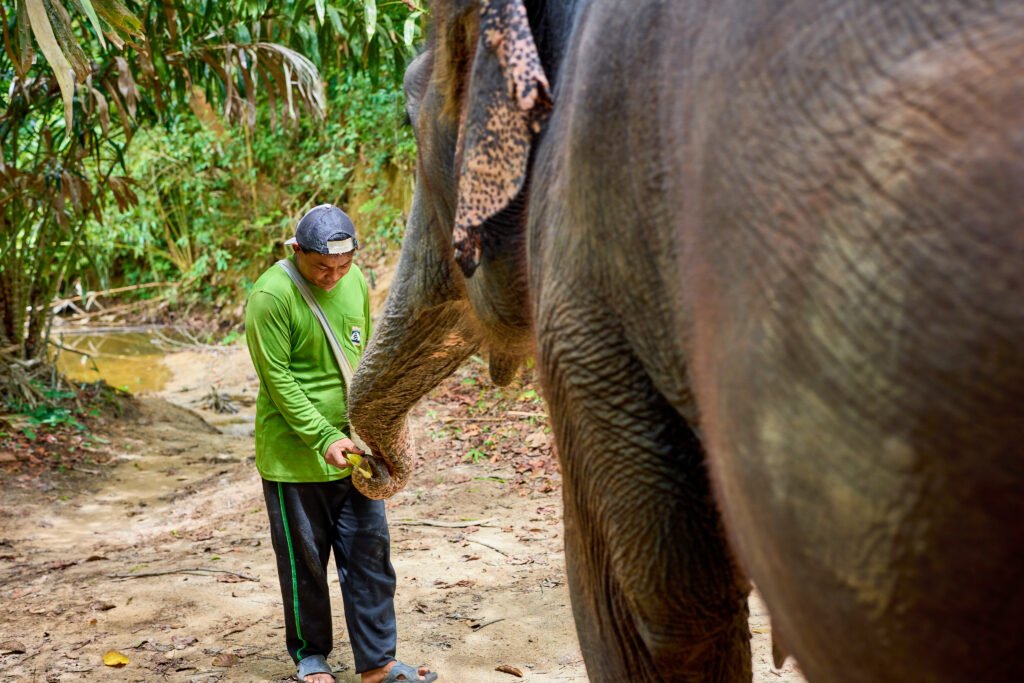For generations, the role of the mahout has been a cherished tradition, passed down within families as a sacred responsibility that requires a deep and intimate understanding of the elephant’s complex behaviors, emotions, and needs. These skilled caretakers do not simply oversee the daily routines of their charges; they form a symbiotic partnership, each relying on the other to navigate the challenges of their shared existence.
At the heart of this remarkable bond is a language all their own – a repertoire of trunk gestures, ear flaps, and rumbling vocalizations that allows the mahout and elephant to communicate on a profound level. Through years of patient observation and unwavering dedication, these caretakers become attuned to the subtle shifts in their elephant’s mood, reading the slightest changes in body language and responding with a level of sensitivity that can only be cultivated over a lifetime. It is this intimate understanding that allows the mahout and elephant to move in harmony, their movements synchronized as if they shared a single consciousness.

Yet, the connection between these two beings goes beyond just the practical; it is a deeply emotional alliance forged through trust, loyalty, and an unbreakable respect. In times of distress or danger, the depth of this connection is truly revealed, as these magnificent creatures have been known to rush to the aid of their human companions, using their immense strength to shield them from harm. Conversely, the mahouts have been known to risk their own lives to protect their beloved charges, a testament to the unwavering loyalty that defines this remarkable partnership.
In the world of elephant conservation, the profound bond between mahout and elephant is especially crucial, as these skilled caretakers leverage their deep understanding of their charges to guide and train rescued elephants, helping them to overcome the trauma of their past and adapt to the safety and security of their new sanctuaries.

Through a combination of patience, empathy, and the implicit trust built over years of companionship, mahouts are able to coax even the most skittish of rescued elephants out of their shells. They begin by introducing themselves slowly, using gentle vocal cues and calming touch to establish a sense of comfort and familiarity. As the elephant gradually learns to trust their new human companion, the mahout will gradually introduce basic commands, rewarding compliance with soothing words and favorite treats.
This delicate process requires an intimate knowledge of elephant behavior and psychology that only comes from a lifetime of experience. Mahouts are acutely attuned to the subtle shifts in an elephant’s mood and body language, allowing them to tailor their approach to the individual needs of each rescue. They know when to apply firm guidance and when to offer reassuring comfort, navigating the fine line between establishing authority and fostering a genuine bond of friendship and trust.

Over time, as the rescued elephant grows to depend on their mahout’s steady presence, the caretaker is able to introduce more complex training, teaching the animal to respond to verbal cues, navigate obstacle courses, and even participate in basic medical procedures. This level of obedience is not born of fear or coercion, but rather a deep respect and willingness to cooperate that stems directly from the unbreakable bond forged between mahout and elephant.
In a world where the future of the Asian elephant hangs in the balance, the preservation of this age-old tradition of mahout-ship has never been more crucial. By fostering a deeper understanding and appreciation for these profound relationships, and by ensuring the continued well-being and protection of both elephants and their human caretakers, we can safeguard the enduring legacy of this remarkable bond. For in the world of the Asian elephant, the mahout is not merely a caretaker, but a partner, a friend, and a guardian of a heritage that stretches back through the mists of time.
